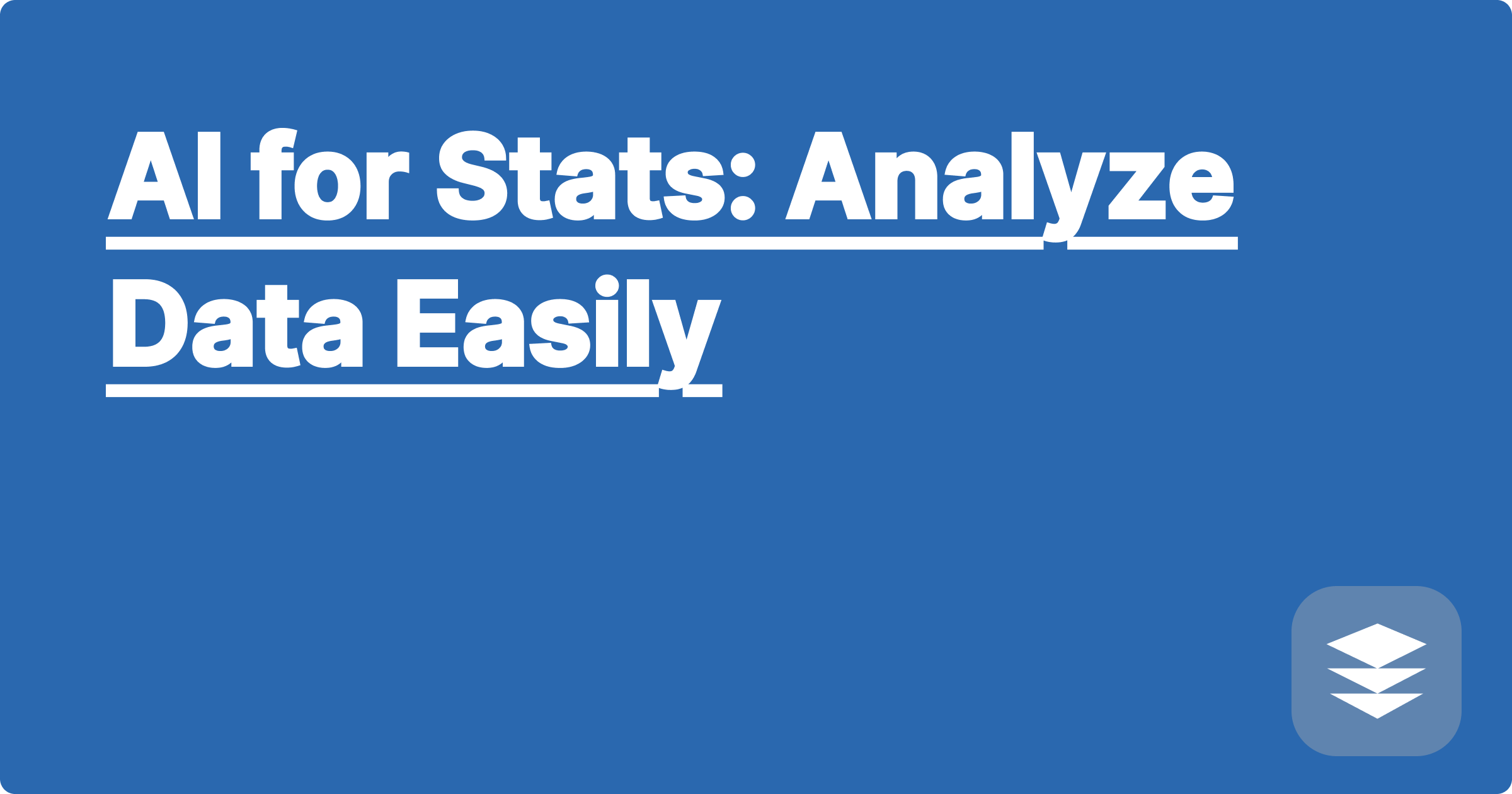
Juggling complex statistical concepts, mountains of data, and demanding deadlines is a common struggle for STEM students and researchers. The sheer volume of information to process and the intricacies of statistical modeling can feel overwhelming. Fortunately, a new wave of AI-powered tools is emerging, offering a lifeline to those drowning in data. These tools aren't just about automating tedious tasks; they're about empowering you to understand and apply statistical concepts more effectively, ultimately unlocking your full potential in your STEM journey.
This blog post isn't about the usual suspects like ChatGPT or Stable Diffusion. We're diving deep into the less-explored, niche AI tools that can revolutionize your statistical workflow and give you a competitive edge. Think of this as your insider's guide to leveraging AI for statistical analysis, packed with practical tips, real-world examples, and a glimpse into the future of STEM learning and research. Imagine having a personalized AI partner, a GPAI (Generalized Personal AI), guiding you through every step, from formulating research questions to interpreting complex results. This isn't science fiction; it's the reality of AI-powered learning.
Many STEM students face a common hurdle: applying theoretical statistical knowledge to real-world data. Bridging the gap between textbook concepts and practical application can be challenging. For instance, understanding the difference between a t-test and an ANOVA is one thing, but knowing which test to apply to a specific dataset, cleaning and preparing that data correctly, and then interpreting the output in a meaningful way is an entirely different ball game. This is where the power of AI comes in.
AI tools offer a powerful solution by providing interactive learning experiences and automating complex calculations. Tools like Wolfram Alpha can handle complex statistical computations, while specialized AI platforms can guide you through the entire data analysis process. Imagine needing to perform a regression analysis. Instead of manually calculating coefficients and p-values, you can input your data into Wolfram Alpha, and it will not only perform the calculations but also visualize the results, helping you grasp the relationships within your data.
Let's walk through an example using a hypothetical GPAI. First, you would articulate your research question to your GPAI. "I want to investigate the correlation between temperature and plant growth," you might say. Your GPAI could then suggest relevant statistical tests, such as correlation analysis or linear regression. Next, your GPAI would guide you through preparing your data, potentially recommending tools for cleaning and formatting. After running the analysis (perhaps using Wolfram Alpha or a specialized biology-focused AI tool), your GPAI can help you interpret the results, explaining the statistical significance and practical implications of your findings.
Consider a biology student researching the effectiveness of a new fertilizer. They could use a specialized AI tool, like hypothetical "BioStat AI," to analyze their experimental data. BioStat AI could identify outliers, suggest appropriate statistical tests (like a t-test to compare the growth of plants with and without the fertilizer), and even generate visualizations to present the findings. Furthermore, the GPAI could link these findings to relevant research papers, providing a deeper understanding of the scientific context.
Another example involves a physics student modeling the trajectory of a projectile. They could utilize Wolfram Alpha to solve complex equations related to projectile motion, factoring in variables like air resistance and initial velocity. This not only saves time but also allows the student to experiment with different parameters and visualize the impact on the projectile's path.
Integrating AI into your workflow requires a strategic approach. First, identify your specific needs. Are you struggling with data cleaning, statistical modeling, or interpreting results? Then, research and experiment with different AI tools. Don't limit yourself to the popular ones; explore niche tools tailored to your field. For example, "MathSolver AI" could be a game-changer for mathematics students, while "ChemLab AI" could revolutionize chemistry research. Next, practice using these tools regularly. The more you use them, the more proficient you'll become. Finally, remember that AI is a tool, not a replacement for critical thinking. Use AI to augment your understanding, but always critically evaluate the results.
Using a GPAI can further enhance your learning. By setting clear goals and outlining your research process with your GPAI, you can create a personalized learning path. GPAI can act as your accountability partner, reminding you of deadlines and helping you stay on track. It can also provide personalized feedback and suggest resources tailored to your learning style, ensuring you understand the material deeply.
The future of STEM learning and research is intertwined with AI. By embracing these powerful tools, you can not only improve your academic performance but also gain a competitive edge in your future career. Start exploring the world of AI-powered learning today and unlock your full potential. Don't be afraid to experiment with different tools and strategies, finding what works best for you. The key is to be proactive and embrace the transformative power of AI. Your GPAI, combined with specialized AI tools, can be your secret weapon to conquer the challenges of STEM and achieve academic excellence.
AI in Chem Eng: Optimize Lab Processes
AI for Calculus: Instant Problem Solving
AI Biology Tutor: Ace Your Exams
AI for Robotics: Design & Simulate
AI for Stats: Analyze Data Easily
AI in Computer Science: Learn to Code
AI for Materials Science: Discover
AI for Linear Algebra: Solve Equations